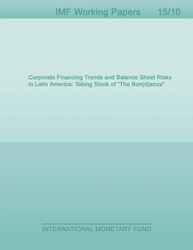
Corporate Financing Trends and Balance Sheet Risks in Latin America
Easy global liquidity conditions, stronger risk appetite and a retrenchment in cross-border bank lending led to a surge in emerging market firms’ bond issuance in international markets (what we term “The Bon(d)anza”). Using firm-level data for five large Latin American economies, we provide evidence of a significant change in companies’ external funding strategies and liability structures after 2010, as well as in the balance sheet risks that firms face. We find that stepped up bond issuance was mostly aimed at re-financing rather than funding investment projects, as firms extended the average duration of their debt while securing lower fixed-rates, reducing roll-over and interest rate risks. The shift towards safer maturity structures has come at the expense of a leveraging-up in foreign-currency-denominated financial debt in several countries— reversing a de-dollarization trend seen during the last decade. We also provide evidence that a substantial part of these bonds were issued through offshore vehicles, suggesting regulatory and tax arbitrage strategies. For some corporations, rising dollar debt and high leverage will be particularly taxing in an environment of US dollar strengthening, less buoyant commodity prices and slowing domestic activity.
Publication date: January 2015
ISBN: 9781498307802
$18.00
Add to Cart by clicking price of the language and format you'd like to purchase
Available Languages and Formats
| English |
Prices in red indicate formats that are not yet available but are forthcoming.
Topics covered in this book
This title contains information about the following subjects.
Click on a subject if you would like to see other titles with the same subjects.
Economics- Macroeconomics , Economics / General , International - Economics , Bond issuance , corporate leverage , bond , debt , markets , issuance , Financial Markets and the Macroeconomy
Summary
Copyright © 2010 - 2024
Powered by:
AIDC



